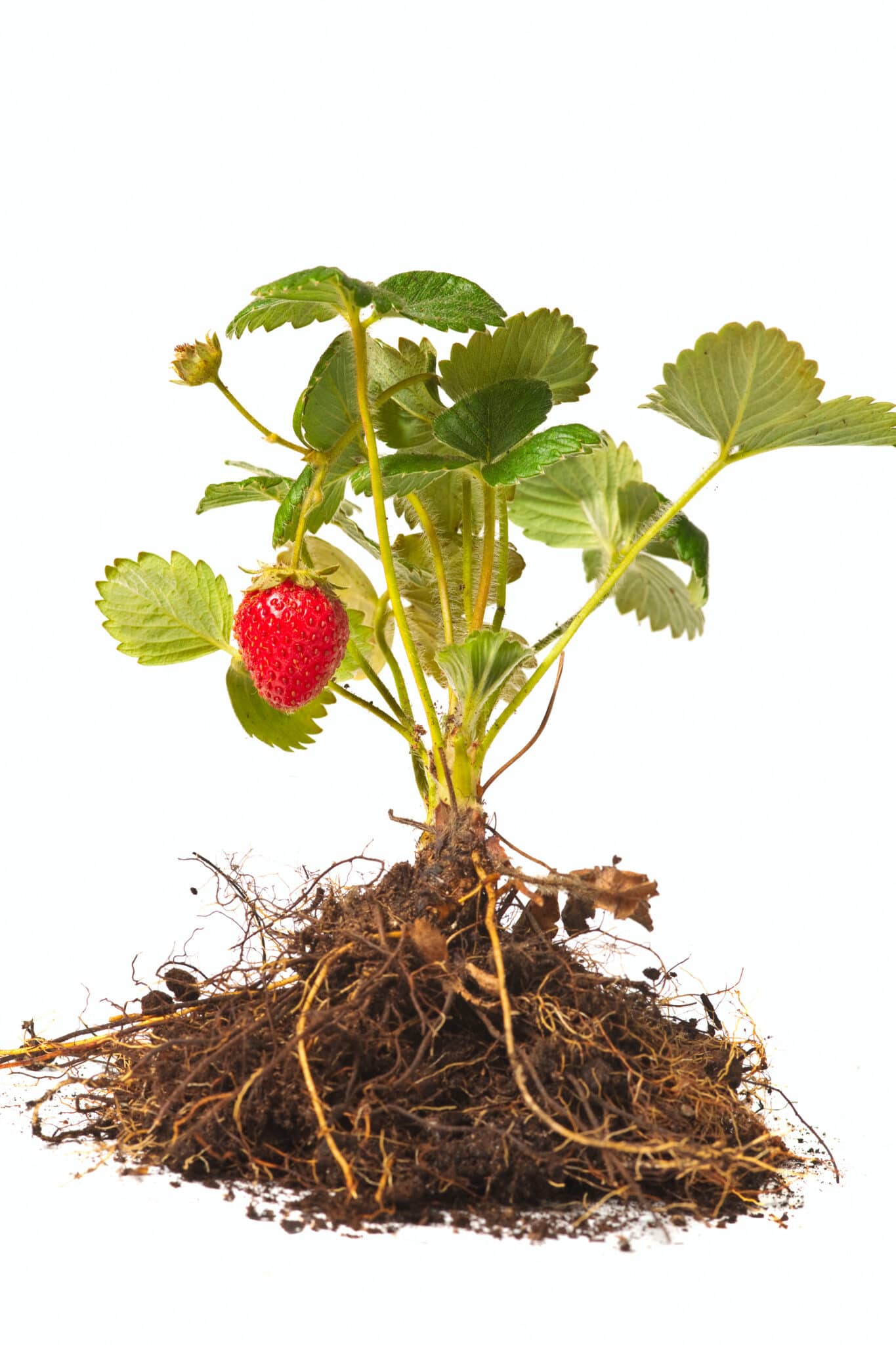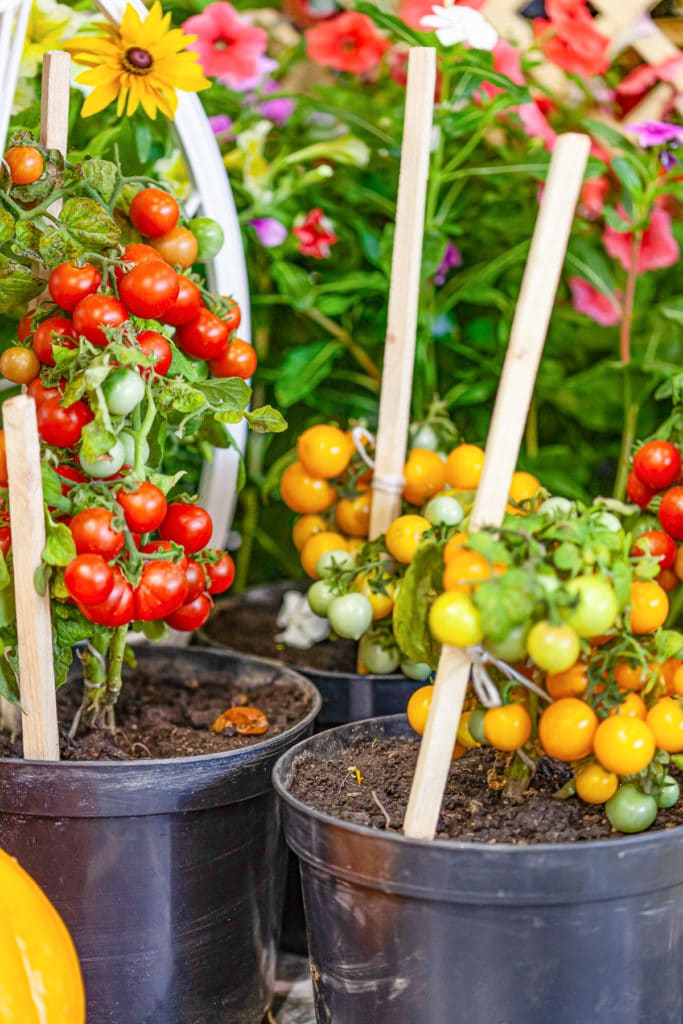How to Grow Strawberries in Pots For Monster Harvests
There’s nothing like biting into a fresh strawberry straight from the garden. But did you know you can enjoy plump, ripe strawberries even without a large garden? Growing strawberries in pots is a fantastic way to bring delicious, juicy strawberries into even the smallest spaces. With just a few tips, you’ll be savoring strawberries picked right from your patio or balcony this year!
This guide covers everything from choosing the best strawberry varieties to watering and winter care.

Affiliate Disclosure
This post may contain affiliate links. If you click one and purchase, I may receive a commission at no additional cost. You can read our disclosure policy here.
Benefits of Growing Strawberries in Containers
Growing strawberries in containers is perfect for folks with space limitations, but that’s not the only perk! Here are some reasons to consider container strawberries:
- Mobility: Move pots to get the best sunlight or shelter from bad weather.
- Pest and Disease Control: Container-grown strawberries can help improve air circulation around leaves, reducing mold and mildew.
- Space Saver: Containers limit strawberries from spreading runners, making them ideal for small spaces.
- Easy Harvesting: With containers close by, it’s easier to monitor ripening berries and pick them at peak ripeness.
Pro Gardener Insight: Studies show that strawberries grown in containers can experience up to 30% fewer pest issues due to better air circulation.

Best Strawberry Varieties for Containers
While any strawberry variety can technically grow in a pot, some types are better suited to container gardening and will produce more fruit.
June-bearing Varieties
June-bearing strawberries will produce large crops in late spring or early summer, which is ideal for big harvests all at once. Great varieties include:
- ‘Cabot’ – Known for immense, sweet berries.
- ‘Jewel’ – A prolific variety with juicy, flavorful strawberries.
- ‘Tillamook’ – A high-yield option.
Ever-bearing Varieties
Ever-bearing varieties provide smaller, steady harvests from spring through fall, perfect for frequent snacking!
- ‘Tristar’ – Consistent producer with great flavor.
- ‘Temptation’ – Compact and ideal for small containers.
- ‘Ozark Beauty’ and ‘Seascape’ – Both produce berries even in the first year.
Alpine Varieties
For unique flavor and charm, alpine strawberries grow well in pots and produce smaller, intensely flavored fruit:
- ‘Mignonette’ – Fragrant, delicate berries.
- ‘Alexandria’ – Great for continuous harvest.
- ‘Improved Ruegen’ – Easy to grow and perfect for containers.
Real-Life Tip: Combine one variety from each category for a mix of small, consistent harvests and a large single crop in late spring. This way, you’ll have fresh strawberries throughout the season!

Choosing the Right Container for Strawberries
Selecting the right pot is essential to the health and yield of your strawberry plants.
- Size: Each plant needs a 12-inch-wide, 8-10 inch-deep pot.
- Material:
- Terracotta Pots: Beautiful but dries out quickly. Use a plastic liner to help retain moisture.
- Plastic Pots: Light-colored plastic pots retain moisture well and are great for hot climates.
- Other Options: Strawberries can grow in hanging baskets, fabric grow bags, or strawberry towers.
Quick Container Tips:
- Choose larger containers if you plan to plant multiple strawberries together or add a few companion plants.
- Check drainage – ensure pots have adequate drainage holes to prevent root rot.
Common Mistake to Avoid: Please do not use a container that’s too small, as strawberry plants need adequate space to spread. We all love adding extra plants, but crowded strawberry roots can reduce fruit production and disease risk.

How to Plant Strawberries in Pots
Planting strawberries in pots is straightforward, with a few simple guidelines:
- Spacing: A 12″-14” pot can comfortably hold 2-3 strawberry plants.
- Planting Depth: Cover the roots with soil, keeping the crown (where leaves emerge) above the soil line.
- Soil Mix: For good drainage and nutrition, use high-quality potting soil mixed with compost or a fruit-specific soil mix. Avoid garden soil, as it compacts easily in containers.
Real-Life Tip: Add a layer of pebbles or gravel at the bottom of the pot for extra drainage. This can be especially helpful in preventing waterlogging.
Common Mistake to Avoid: Don’t bury the crown of the strawberry plant (where the leaves emerge) too deeply, as it can rot if covered. Keep the crown just above the soil level for best results.

Sun Exposure for Strawberries Grown In Pots
Strawberries need 6+ hours of sunlight daily for the best yield and flavor.
- Ideal Spot: Place your pots where they’ll get ample sun; a south-facing location is often best.
- Hot Climates: If your area has intense summer heat, provide some afternoon shade to protect the plants from scorching.
Watering Strawberries in Containers
Strawberries in pots dry out faster than in the ground, so regular watering is critical. Here’s how to get it just right:
- Soil Test: Stick your finger an inch into the soil; if it feels dry, it’s time to water.
- Technique: Water at the plant base, avoiding leaves to reduce the risk of fungal diseases.
- Frequency: Increase watering frequency during hot weather, but allow the top inch of soil to dry slightly between waterings.
Pro Gardener Insight: Water in the early morning so plants have enough moisture to withstand midday heat.
Common Mistake to Avoid: Avoid overwatering, as waterlogged roots can lead to root rot and poor plant health.

Fertilizing Container Strawberries
To promote productive, juicy strawberries, regular fertilizing is essential:
- At Planting: Mix a slow-release organic fertilizer into the soil.
- During Growing Season: Apply a liquid fertilizer high in potassium every two weeks to encourage fruiting.
Real-Life Tip: Add a half-strength liquid fertilizer to your watering can each time you water for steady nutrient absorption. This will help keep nutrients consistent and prevent spikes.
Common Mistake to Avoid: Avoid over-fertilizing, as excessive nutrients can lead to lush leaves but fewer berries.
See our complete guide on Fertilizing Strawberries for Higher Yields and Healthy Plants.
Common Pests and Problems
While container gardening reduces pest risks, you may still encounter issues. Here’s how to tackle common problems:
- Birds: Birds love strawberries! Drape netting over plants to protect berries.
- Pests: Watch for aphids and spider mites on container plants. Regularly inspect and remove them by hand or use insecticidal soap.
- Root Rot & Fungus: Avoid overwatering and ensure good drainage to prevent these issues.
Real-Life Tip: Plant mint nearby or place marigold pots around strawberries to deter pests naturally.
Common Mistake to Avoid: Don’t let berries rot on the plant, as decaying fruit can attract more pests and diseases.
Maximizing Your Strawberry Harvest
Pick strawberries when they’re fully red and juicy. Harvesting at peak ripeness ensures the best taste and encourages more fruit production. Trim runners in container plants to focus energy on fruit growth.
Harvest Tip: Use scissors to snip berries from stems to avoid bruising or damaging the plant.
Common Mistake to Avoid: Don’t pick berries before they’re fully ripe. Strawberries stop ripening once picked, so wait until they’re fully red.

Winter Care for Container Strawberries
To keep strawberries thriving year after year, prepare them for winter:
- Mild Climates: Add a layer of mulch to protect roots from mild cold.
- Cold Climates: For added protection, bury pots in the ground, wrap them in insulation, or move them to an unheated garage.
- Check Soil: Periodically check the soil’s moisture, as strawberries still need water even during dormancy.
Pro Gardener Insight: Straw or leaf mulch helps insulate and protect roots from freeze damage. Remove mulch in early spring to avoid trapping moisture and causing rot.
Quick Winter Tips:
- Use straw, leaf mulch, or bubble wrap for extra insulation.
- Check soil moisture monthly through winter to prevent drying.

Frequently Asked Questions (FAQ)
- How many strawberries can one plant produce? A healthy plant can yield about 1-2 pints per season, depending on the variety.
- What’s the best size pot for strawberries? A 12-14 inch diameter pot is ideal for 2-3 plants.
- Can strawberries grow in the shade? They prefer full sun but tolerate some afternoon shade, especially in hot climates.
- Should I prune strawberry leaves? Yes, prune older or damaged leaves to encourage fruit production.
Related Articles
If you enjoyed this guide, check out more helpful tips for container gardening:
Conclusion
Learning how to grow strawberries in pots is simple and rewarding. You can enjoy juicy strawberries even in limited spaces with the right variety, container, and care.

Author: Laura Kennedy
Writer & Owner of Little Yellow Wheelbarrow
Laura is a highly skilled gardener and fervent flower enthusiast. Despite her playful battle with plant spacing guidelines, Laura’s work inspires gardeners to create thriving, beautiful spaces that reflect both creativity and sustainability.
Editors Note: This post was originally published on March 28, 2021, and was updated on Jan 3, 2025 for improved clarity and reader experience.












